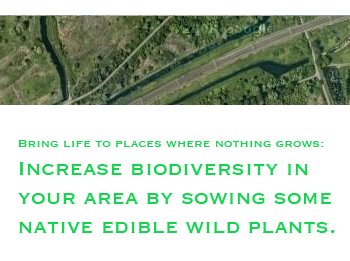Let's take good care of our wildlife. Some suggestions:
Asking PermissionWhen ownership of a plant or tree is unclear we suggest you ask, rather than take. Let's not get too enthusiastic and steal people's fruits.
How much do I really need?A tree full of ripe fruit can be really exciting but how much will you use before it goes bad? How much can you carry? Decide before you pick. And do actually eat what you've gathered.
Will my harvesting leave an impact?This includes visual impact, impact for animals and future harvesters and last but not least the impact on the particular plant you are picking from. It is imperative to pick in a balanced and selective manner. The last thing we want is to damage the sources from which we harvest!
In fact planting some extra edible native wild plants would be fantastic. Wilde Bertram has a great living library of them.
Consider chemical contaminationWatch out! Don't pick on suspicious spots, like near the harbour or heavy industry. Also homeowners also tend to use pesticides like Roundup on their stuff. Needless to say, it’s always best to get information on the harvesting site if you can.
adapted from the Portland site.










